
Role
UX Researcher
Duration
12 weeks
Tools
Figma
🌱 Introduction
I had the opportunity to work with JUBI DAO on their web3.0 platform for founders, investors and angel investors.
Overview
This Research was conducted to delve into the area of investors, founders and angel founders in Web3 projects, to find out and become aware of their needs and opportunities.
The majority of research was conducted as semi-structured interviews, to find out how users currently found and/or invest in Web3 projects, what tools they are currently using, and what provisions could be provided to improve their experience in the future.
Themes that arose included creating enjoyable experiences within Web3, easing users fears of rug pulls with JUBI smart contracts, and helping investors and founders in Web3 projects, regardless of their level of Web3 knowledge. The main findings and insights were in the areas of trust, transparency of the system users are using to create and invest in Web3 projects, as well as increasing education around Web3 and further solutions for building community.
Project Background
To begin, it was important to understand Web3.0 and why people are wanting to create smart contracts in the first place, and the three main users;
Founders
Investors
Angel Investors
It was equally important to understand why the creation of smart contracts through JUBI is such an essential method for Web3.0 projects. To this, not only does the creation of smart contracts save founders immense amount of time, but also cuts huge costs and allows them to have full trust and transparency in the process, which is essential to Web3, Blockchain technology and the Web3 community as a whole.
Through this project, I had the opportunity to uncover the needs and pain points in relation to web3.0 projects for founders and investors, find out which features and functionalities founders want when creating, funding their ventures and managing their project tokens, find out what tools they are currently using, make an end-to-end journey map that shows how a founder would fund a project, from launching a pre-sale to managing their team budgets, and create a roadmap for Jubi that outlines all features for them to roll out.
Research Objectives
Overall, the research conducted aimed to
- Uncover needs and pain points of founders & investors in relation to Web3 Projects
- Explore what tools are founders currently using to manage their Web3 projects and tokens
- Find out what features and functionalities do founders
want - Create an end-to-end journey map
👩🏻💻 The Process
- Stakeholder Interviews
- Secondary Research
- Web3 Investors & Founder Interviews
- User Journey – Current State
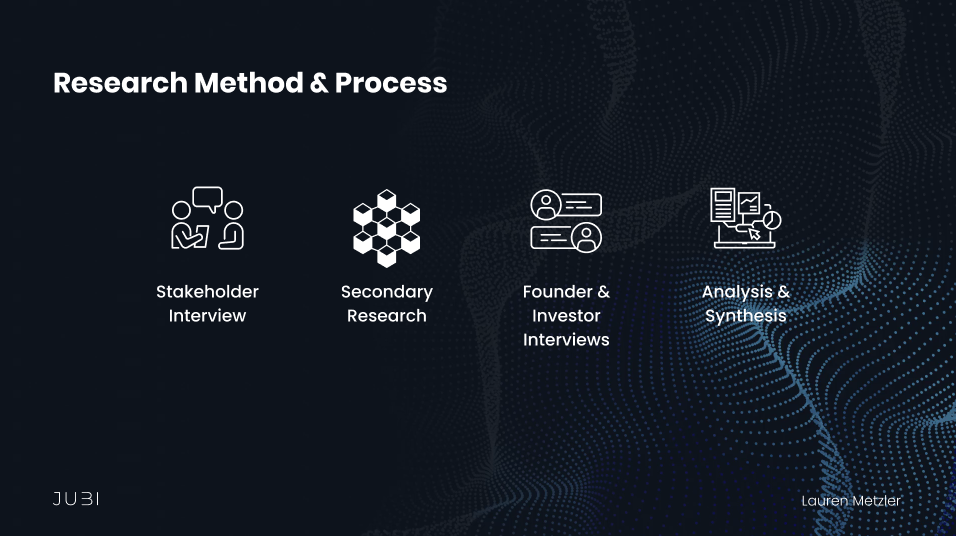
Stakeholder Interviews
In order to understand JUBI’s objectives and expectations of the research being undertaken, we conducted interviews with stakeholders including Ash Van der Spuy who is the Co-founder of JUBI and Sam Hancock, who is the Former Product Lead at JUBI.
Additionally, I was able to secure a second stakeholder interview with both Sam Hancock and Harry Dell, Co-founder of JUBI.
Some of the key topics covered in both sessions included background information on JUBI, how JUBI’s smart contracts save founders time and money, and what JUBI can offer investors and founders, and the Web3 community as a whole.
For the sake of clarity, the information that was gathered by both interviews has been summarised and grouped into three key areas: goals, needs and challenges.
Goals:
Short Term: Discovering Founders & Investors pain points when launching a Web3.0 project
Improve Smart Contracts, and simplify for new investors.
To be a swift transaction – minutes instead of hours of admin time
Long Term: In the next couple of years, JUBI wants to see people being able to manage their companies with tokens instead of shares. As well as no need to deal with ASX (which is a closed system.
For everything to be on Web3 – Transparent using Blockchain technology. Users will know who owns what through online ledgers. (not through a bank/shares)
Needs:
To build Reputation – Reputation in Web3 is everything.
Build Trust within the Community to get Founders on board.
Challenges:
Rug Pulls that impact business and cost investors/founders
KYCs – ID validation is very tricky on Web3 because many of the community do not want to be identified. This is in line with the foundations of Blockchain technology and Decentralisation.

Secondary Research
Key Insights using UX Heuristics Principles
System Feedback & Guidance
Communicate clearly with users, build trust with open and continuous communication throughout the process
ie Token Allocation calculation and/or submit button being locked during processing time (Error Prevention)
Match System Design with Real World
Help users with learning curve of Web3 by matching design and language from Web2 sites (that users are more familar with) Example: Metamask onboarding animation
Learnability and Productivity
Help users who are brand new, while also making quick actions for those that are more knowledgable, transparency for developers (layers of Web3 users)
Help and Documentation
Visual cues and FAQs for those using for the first time, such as tool tips and help link for complex technical terminologies. This will help build confidence and maximise learnability for users, regardless of Web3 knowledge
Web3 Investors & Founders Interviews
I interviewed a total of 9 people, including 2 Web3 Founders and 7 Web3 Investors. Each had a varied amount of Web3 knowledge and projects.
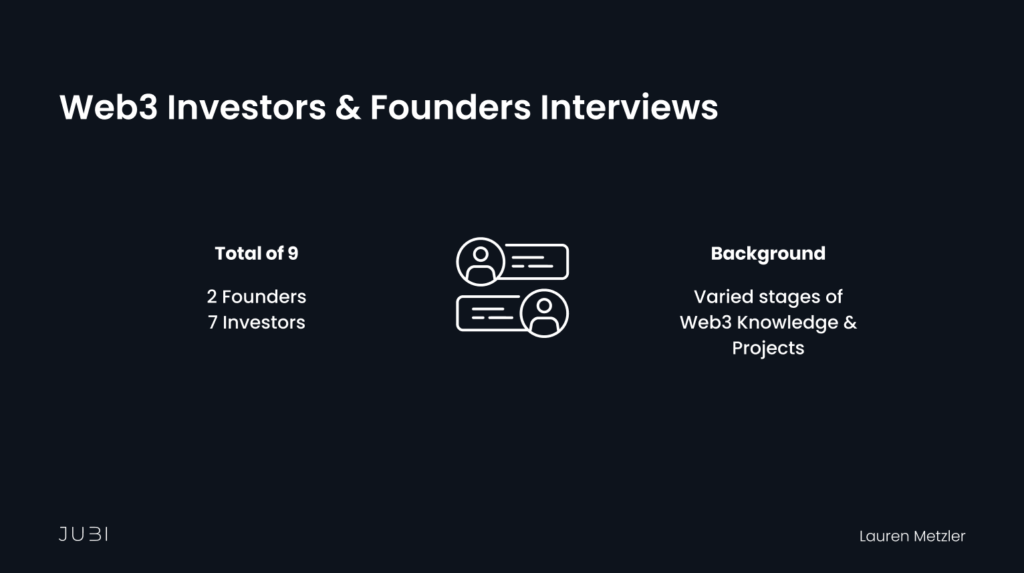
Recruitment
Participants were recruited from:
-Web3 Communities – Discord, Reddit, and Telegram
-Askable
-LinkedIn
-Harness Projects family & friends
Idea participants are those who have created a Web3 project or invested in a Web3 project in the past year.
Limitations
-Short timeline with no budget
-The amount of knowledge required around Web3.0 technology and jargon
No incentive for founders and investors to participate in research
Web3 Investors & Founders Key Insights

Trust is #1 for me when investing.

“Transparency and Education of Information are key”
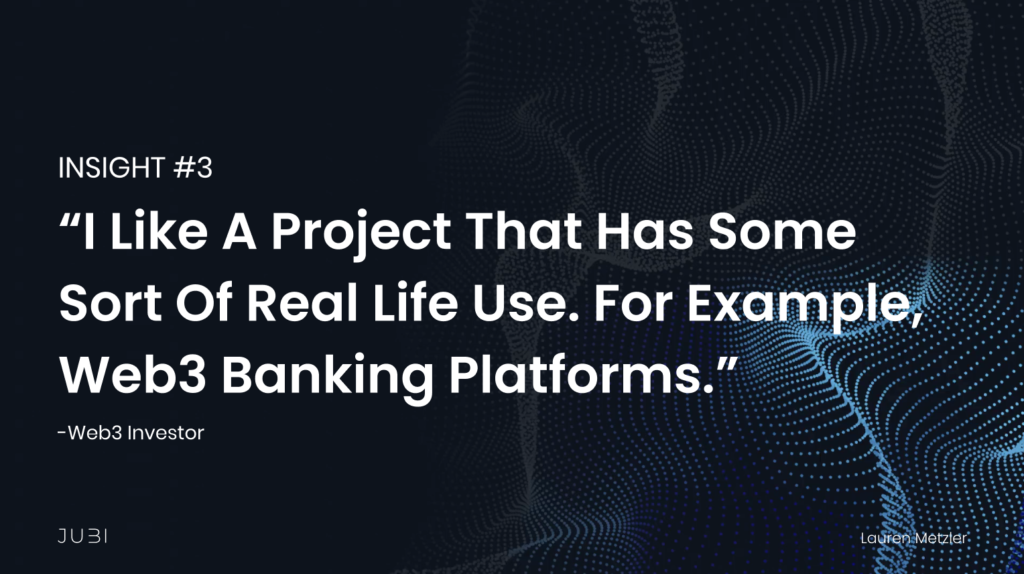
I like a project that has some sort of real life use. For example, web3 banking platforms.

Some How-to guides or a glossary of terms would be helpful.

Getting the smart contracts built and an audit are the delays. It’s costly.
🔍 Web3 Research
User Personas
To better understand JUBI’s users, I created User Personas based off the Interview Research conducted. From these interviews, I was able to create Founder Fiona to discover her main pain points, motivations and goals. This would be used while creating my design recommendations to keep Users’ needs at the forefront of my design thinking.
Web3 Investor
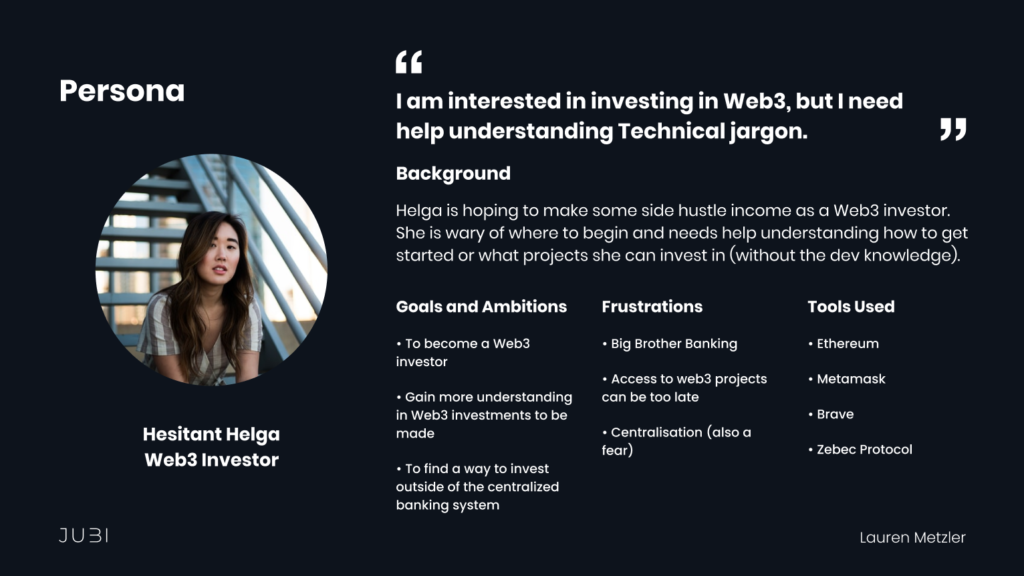
I am interested in investing in Web3, but I need help understanding Technical jargon.
Web3 Angel Investor
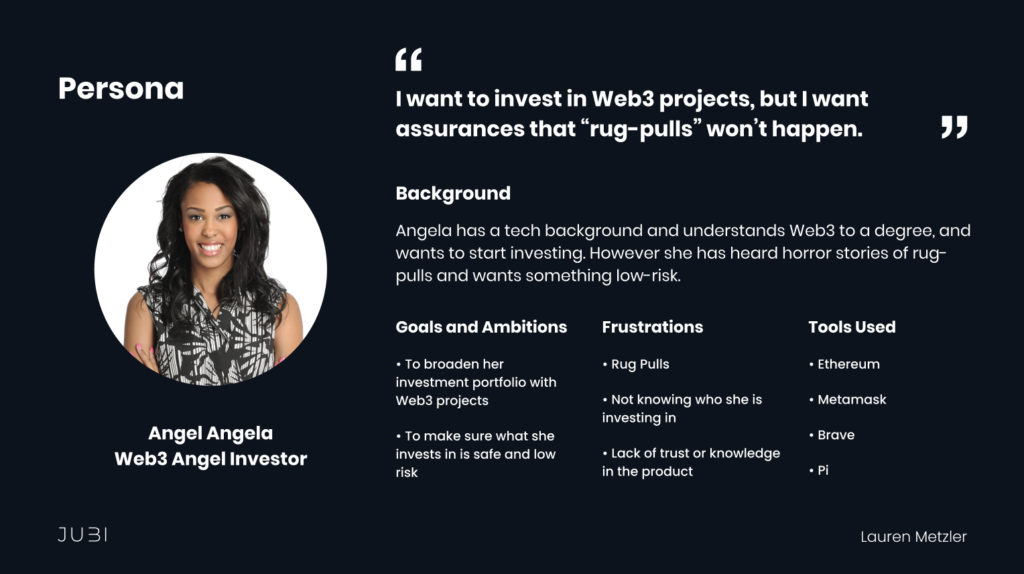
I want to invest in Web3 projects, but I want assurances that “rug-pulls” won’t happen.
Web3 Founder
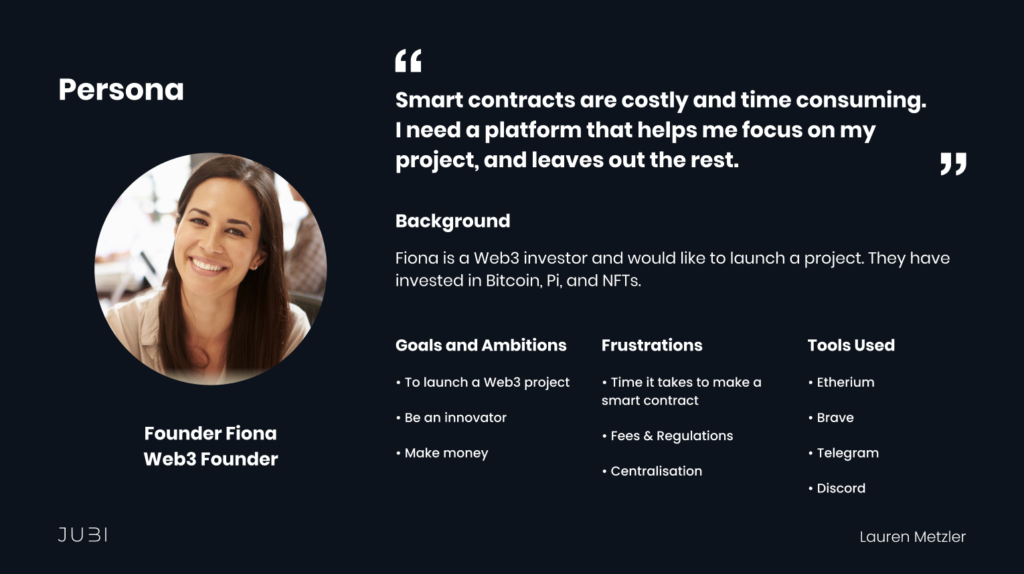
Smart contracts are costly and time consuming. I need a platform that helps me focus on my project, and leaves out the rest.
💫 Web3 Overarching Themes
Education
How to educate users while they are going through site with system feedback and guidance, so as not to overwhelm.
Trust
How to build Trust and how important it is in the Web3 Community to have trust in a project before investing.
Transparency
How to make sure that JUBI is transparent with all its system feedback and guidance, regardless of Users’ Web3 knowledge or background.
Community
How JUBI can build Community, which is essential in Web3 projects.
User Journey – Current State
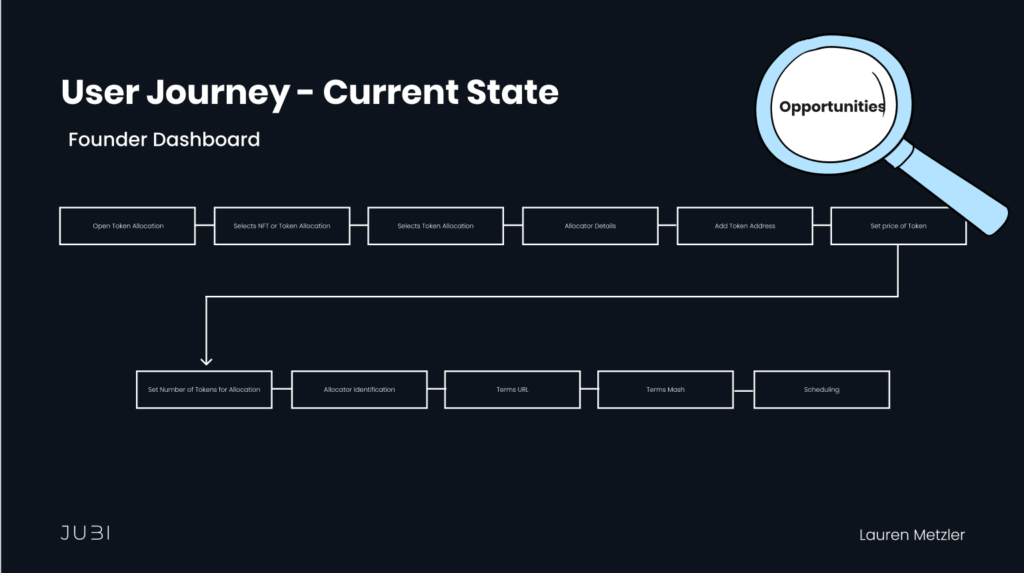
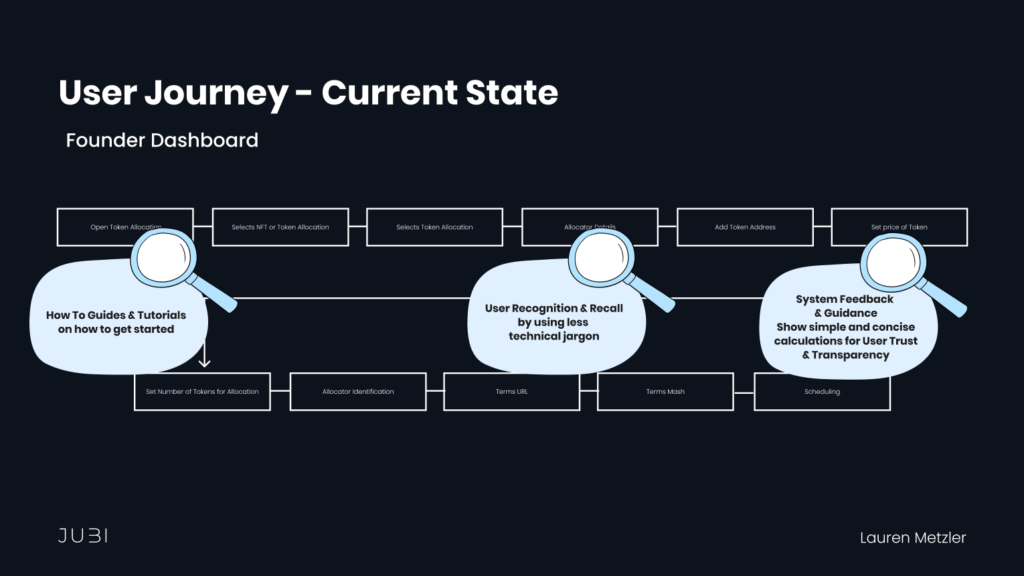
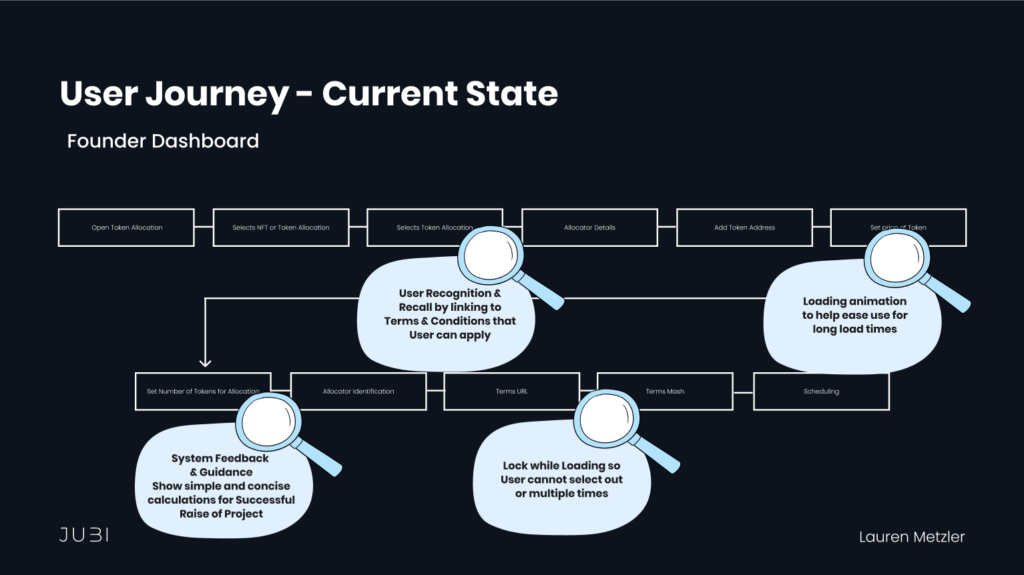
User Journey – Future State
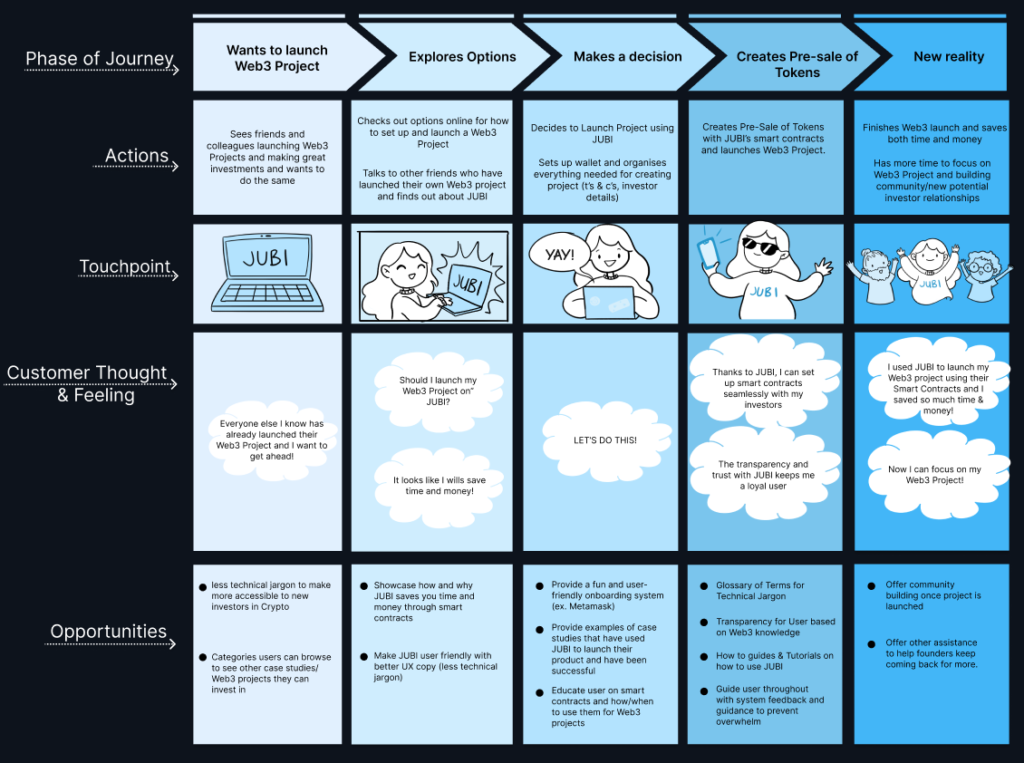
Happy Path Storyboard
From these insights, I was able to create a Storyboard to showcase how JUBI could find opportunities to help their Users, using Founder Fiona as the main character. This storyboard illustrates Founder Fiona’s user end-to-end journey in their future state while using JUBI.
A happy path storyboard was created to show how Founder Fiona would interact with the proposed solutions for JUBI and how it is has improved her capabilities as a Web3 Founder.
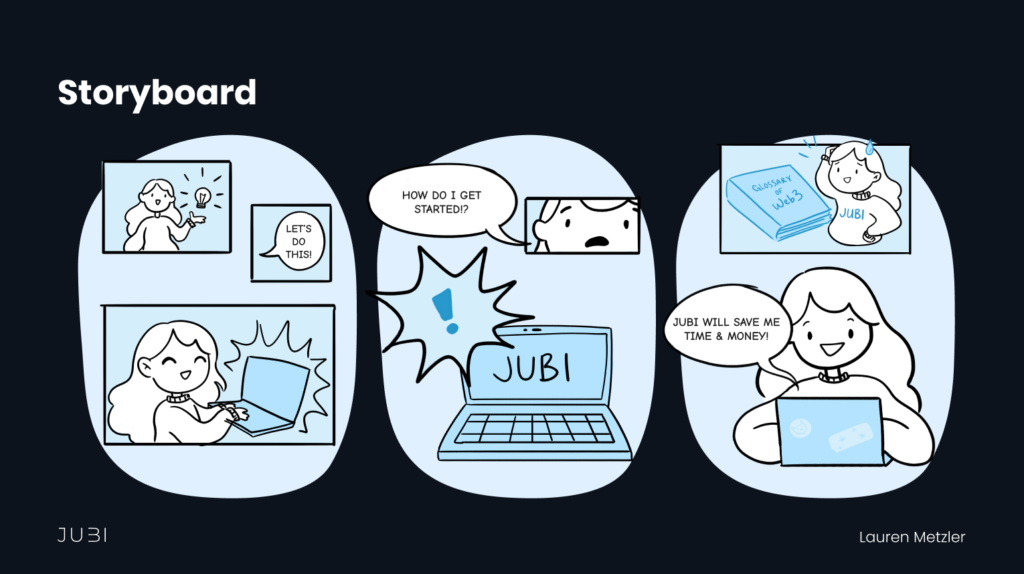
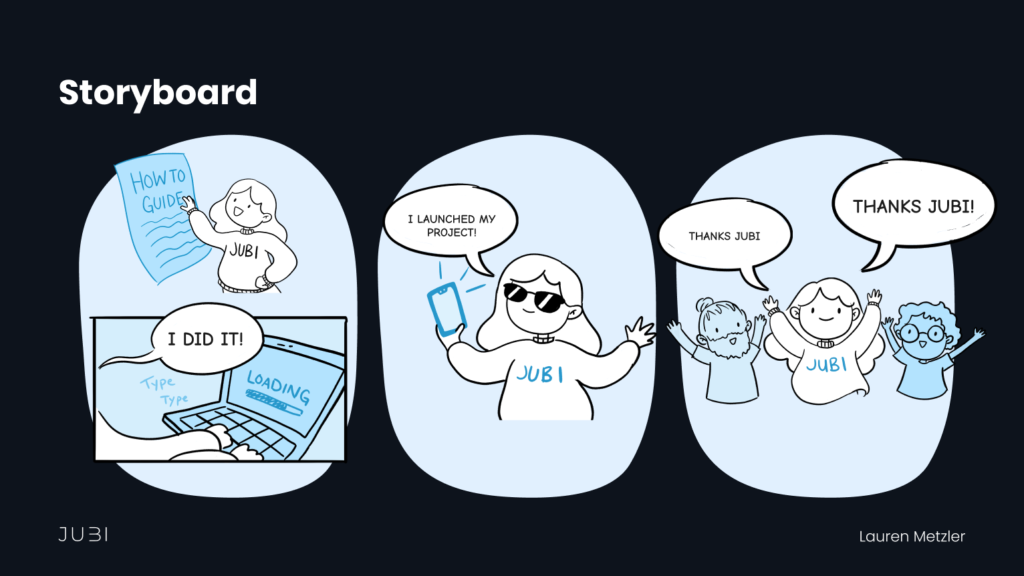
💻 Recommendations
1. Education
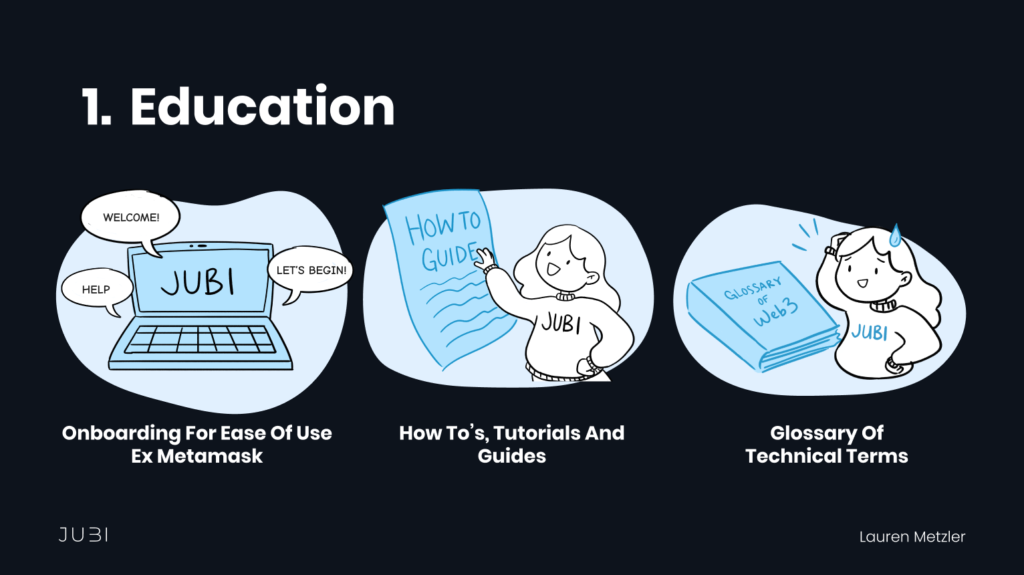
Connect Users back to what they already know
Connect users back to what they already know to help bridge the knowledge gap
How? use easy language that connects users knowledge to what they already understand, or relate to dApps they know already. Example: Metamask (“The internet isn’t safe, identities get stolen”)
Onboarding
The first impression of a Website regardless of Web2 or 3 is onboarding with simple, clear instructions to help navigate user and sign into an account.
How? Create an Onboarding system that is seamless, fun and intuitive for the User. Example: Metamask (Onboarding animation with different animal characters)
How To’s, Tutorials and Guides
Educate as User navigates website, so doesn’t become overwhelmed.
How? Tutorials and How To Guides on a section of the website to help Users understand what exactly they need before getting started (terms, investor info, etc).
Reminders and system guidance as User enters Dashboard
Keep Language Accessible
Keep the language accessible by reducing technical jargon or help educate user on technical jargon (where it cannot be replaced)
How? Less technical Jargon and implement glossaries, help icons to help user understand and refer back to
For Example: Etherum’s glossary of terms
2. Trust
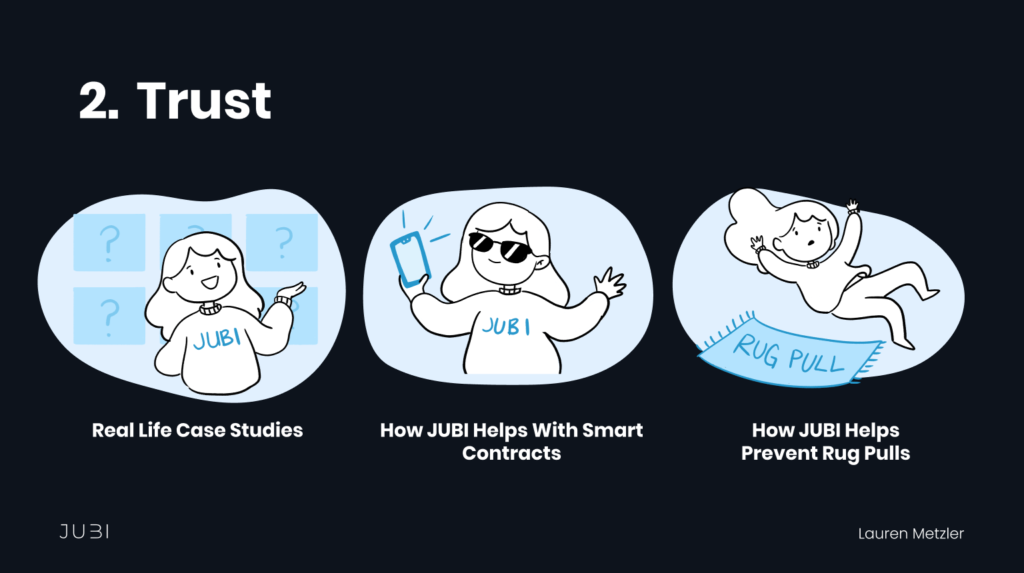
Real Life Case Studies
Build trust within community by showcasing real case studies that have been successful in funding a Web3 Project through JUBI
How? Links to Web3 Projects as Real life case studies that are successful having used JUBI
ex. Investing platforms on Web2
Smart Contracts
Help Users understand how and when to use smart contracts, and how they are audited within different country regulations to instill trust in JUBI
How? Build a resource section for Smart Contracts and different country regulations on JUBI website.
Rug Pulls
Help Users understand how and when to use smart contracts, how they are audited and how JUBI helps prevent Rug Pulls to instil trust.
How? Build more awareness around JUBI as the #1 platform for preventing Rug Pulls via smart contracts.
3. Transparency
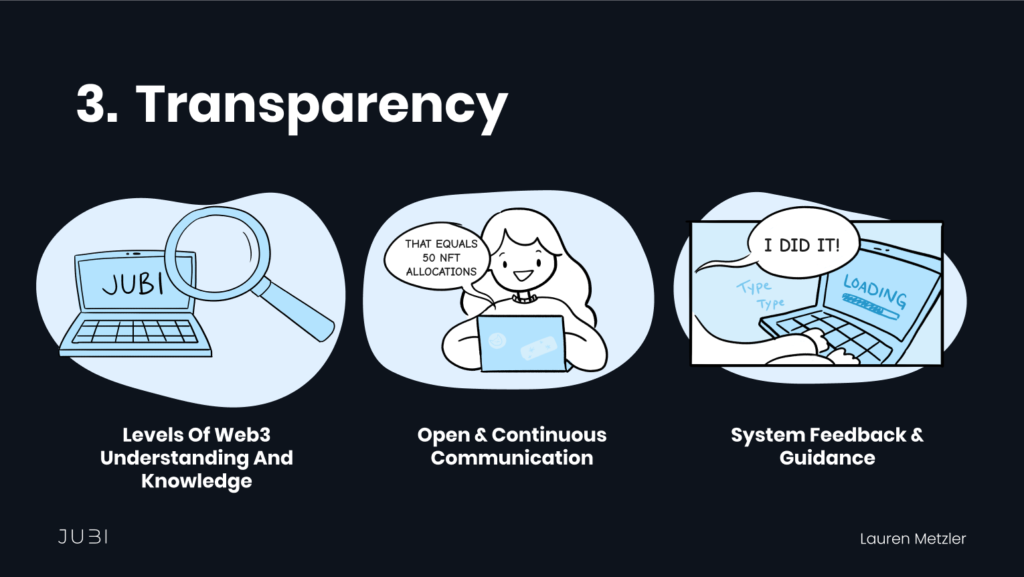
Levels of Web3 Understanding and Knowledge
Establish Trust also through Transparency. JUBI is within the web3 blockchain culture, where decentralisation is key to users’ trust. Be clear with users about what capabilities are and security
How? Allow users access to docs and any security fallbacks, so average user can understand. From whitepapers to more in depth knowledge for developers to deep dive.
Open & Continuous Communication
Show how calculations are made in clear and concise language for Transparency
How? NFT allocations and how they are calculated
System Feedback & Guidance
Show Users when they have completed an action through out process.
How? Lock when loading so User cannot enter multiple times, also a loading animation to help with User Ease of Use
4. Community
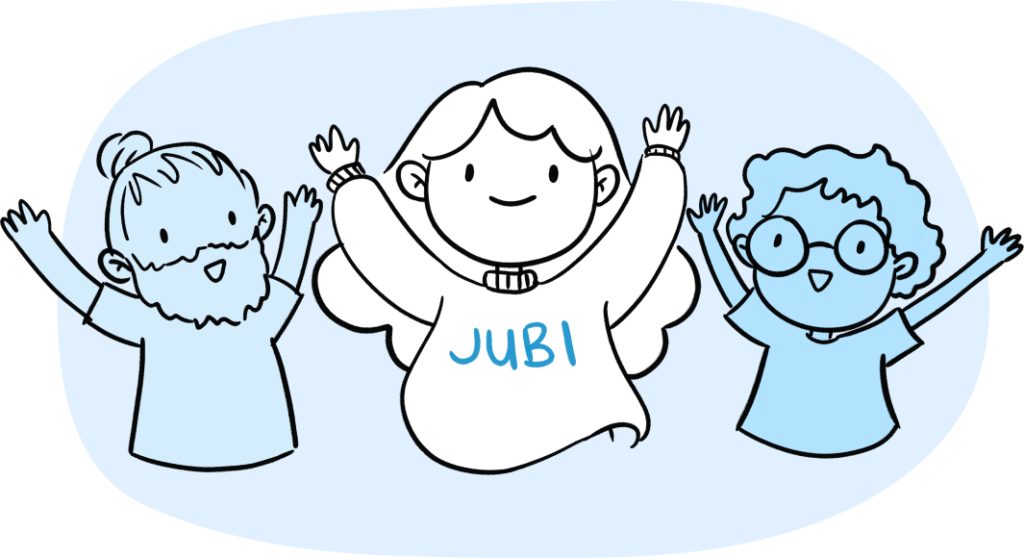
Resource hub for Investors to learn about different Web3 Projects
How? Links to different projects investing can choose to invest in based on category they are interested in.
Ex. Opensea links Users to NFTs they can browse for purchase.
Ex. Crowdfunding Web2 websites.
⭐️ What Next?
- Conduct further research into what kinds of categories align with JUBI projects
- Create more marketing materials around JUBI to help funnel user to site
